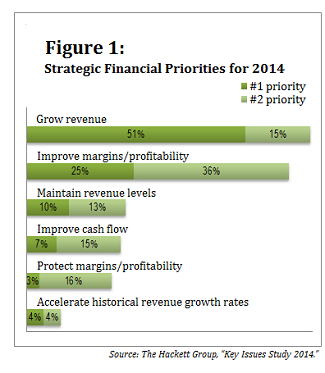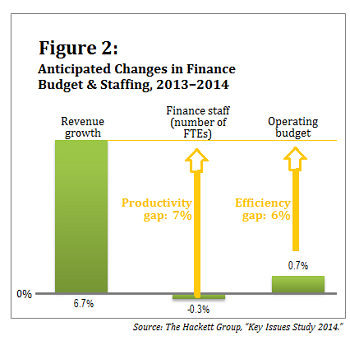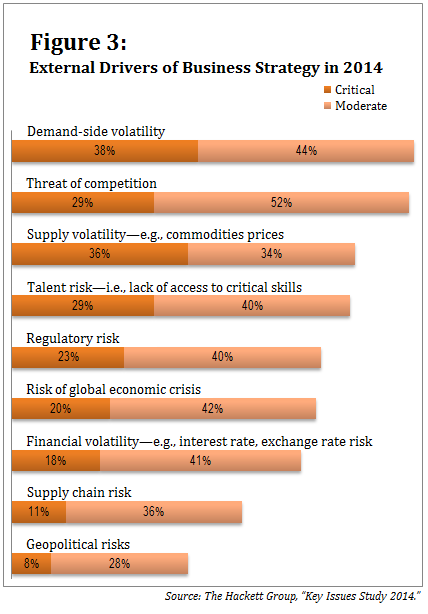 Ever since the financial crisis heightened companies' awareness of the importance of cash flow management, treasury activities—and treasury managers—have been inhabiting larger roles in many organizations. “The focus on cash escalated during the crisis; everyone was fairly tied up with that particular topic,” says Sherri Liao, practice leader for the enterprise performance management and business intelligence executive advisory program at The Hackett Group. “Cash is still something that companies are looking at, especially organizations that have tighter payment cycles. Also, we're finding that companies making larger capital investments are being pressed to show how they're going to make those cash outlays and returns on those investments because there's a heightened sensitivity around risk now.”
Ever since the financial crisis heightened companies' awareness of the importance of cash flow management, treasury activities—and treasury managers—have been inhabiting larger roles in many organizations. “The focus on cash escalated during the crisis; everyone was fairly tied up with that particular topic,” says Sherri Liao, practice leader for the enterprise performance management and business intelligence executive advisory program at The Hackett Group. “Cash is still something that companies are looking at, especially organizations that have tighter payment cycles. Also, we're finding that companies making larger capital investments are being pressed to show how they're going to make those cash outlays and returns on those investments because there's a heightened sensitivity around risk now.”
The 2014 “Key Issues Study” from The Hackett Group indicates, predictably, that cash is taking a back seat to revenues and profits. When asked about their company's strategic financial priorities for 2014, two-thirds of respondents said that growing revenue is either their number-one or number-two priority. Nearly as many cited improving margins and profitability as either number one or number two. Improving cash flow scored quite a bit lower, with only 7 percent citing it as their top priority and 15 percent claiming it's their second-most-important objective. (See Figure 1, below.)
This doesn't mean, though, that cash management has fallen by the wayside of the corporate agenda. “As organizations are able to improve visibility to margin management and product or customer/channel profitability, they're going to have more of a way to link that kind of information to cash flow,” Liao says. “It's just that now there's limited visibility into seeing where performance is coming from. Once that visibility becomes more transparent, they're going to be able to make better cash flow analysis, better leveraged insight into that area to give them line of sight.”
Performance management and business intelligence (BI) applications are often the means to achieve this type of visibility. They don't come ready to go off-the-shelf, but companies in industries that are focused on cash—such as financial services—are investing resources to develop out their cash flow forecasting capabilities, says Liao. In fact, some are starting to incorporate cash flow forecasting into corporate processes around performance management and performance analytics. “They're pointedly building out modeling capabilities to see how cash will change based on demand, or if their business changes in certain ways in certain markets,” Liao says.
 Finance teams typically deploy BI and analytics software to measure costs or to slice and dice profitability, such as by customer, product, channel, project, or other dimension. These areas are generally considered to fit within the purview of finance. But, says Liao, “often what we're seeing is that the BI applications that companies are investing in will be extended into other areas of the enterprise to tell a bigger story. The BI software might be linked into things like marketing effectiveness. It might be linked into sales and operations. Linking these types of data together becomes a lot more powerful in telling the story of what's really going on with the enterprise, as opposed to just the financial view of things. Because of their skill sets and talents, finance is often looked to as providing the analytics for pretty much everything.”
Finance teams typically deploy BI and analytics software to measure costs or to slice and dice profitability, such as by customer, product, channel, project, or other dimension. These areas are generally considered to fit within the purview of finance. But, says Liao, “often what we're seeing is that the BI applications that companies are investing in will be extended into other areas of the enterprise to tell a bigger story. The BI software might be linked into things like marketing effectiveness. It might be linked into sales and operations. Linking these types of data together becomes a lot more powerful in telling the story of what's really going on with the enterprise, as opposed to just the financial view of things. Because of their skill sets and talents, finance is often looked to as providing the analytics for pretty much everything.”
As companies' need for analytics grows, finance teams may find that they lack the talent to keep up. Respondents to the Hackett Key Issues study expect their company's revenue to grow by an average of 6.7 percent this year. Yet only 37 percent expect their operating budget to increase; the average change across all respondents is a 0.7 percent increase. And only 27 percent expect their finance staff to grow; on average, respondents anticipate that their staff size will actually shrink by 0.3 percent in 2014. (See Figure 2 on page 2.)
Perhaps that's why the Hackett study also found that lack of access to critical skills is a key driver of enterprise strategy in 2014. Nearly a third of respondents said their company faces a critical talent risk, and more than a third said talent management poses a moderate risk to their organization (see Figure 3, below).
“Companies have reduced their deficiencies in the core finance skills, such as compliance management, running a revenue cycle, and external reporting,” says Jim O'Connor, principal in the financial advisory practice at Hackett. “But our research shows that business acumen and the ability to drive change—those softer partnering skills—are where companies are starting to look for help on their journey.”
 “For a long time, it was OK from a finance perspective to just have a good sense for the numbers,” adds Liao. “Now we're seeing demand for resources that truly understand what it takes to run the business, as well as to effectively model and bring in external factors to be considered in those models.” She says Hackett is seeing more and more companies adopt rotational programs to improve the business knowledge of their finance team. “It's not just someone who has an MBA,” she adds. “People really need to understand what it takes to run different portions of the business to tell the story of where the results are landing and where some of the risks are coming from.”
“For a long time, it was OK from a finance perspective to just have a good sense for the numbers,” adds Liao. “Now we're seeing demand for resources that truly understand what it takes to run the business, as well as to effectively model and bring in external factors to be considered in those models.” She says Hackett is seeing more and more companies adopt rotational programs to improve the business knowledge of their finance team. “It's not just someone who has an MBA,” she adds. “People really need to understand what it takes to run different portions of the business to tell the story of where the results are landing and where some of the risks are coming from.”
Instead of implementing rotational programs to improve the capabilities of their treasury and finance staff, some organizations are moving strategic activities into internal shared service centers, or even outsourcing them.
Traditionally, finance functions have tended to outsource transactional activities, such as payables or expense processing. “That's where people start, whether they're outsourcing or moving to a captive center,” says Rich Cardillo, the principal responsible for Hackett's finance transformation consulting organization. “They start with the heavy transaction processing, those finance activities that are focused on driving efficiency.”
But recently, the types of activities being outsourced have shifted. “Over time, people have moved additional activities within finance to either an outsourcing provider or a captive center—not so much for driving efficiency, but more for driving effectiveness,” says Cardillo. “That's when you start moving up the food chain of finance activities into things like management reporting, elements of planning, or elements of credit, collections, and receivables.”
There's no rule for which functions companies should outsource; that depends on each organization's goals and risk tolerance. Some companies are looking at outsourcing tax reporting, internal audit, and even treasury. “Those kinds of functions end up being more of a blended model, where a company will leverage an outsourcing partner for select capabilities or support in different parts of the world, geographies in which it can't build a business case to develop internal capabilities,” says Tom Willman, associate principal in Hackett's finance executive advisory practice.

© 2025 ALM Global, LLC, All Rights Reserved. Request academic re-use from www.copyright.com. All other uses, submit a request to [email protected]. For more information visit Asset & Logo Licensing.




